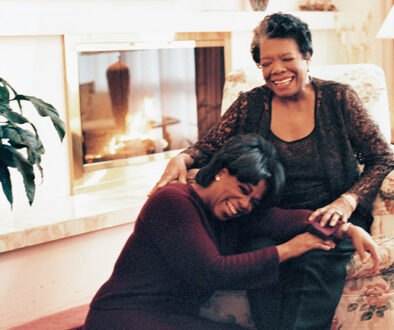Why Distressed Women Tend and Befriend

Tend and Befriend My Friends
When I heard about Professor Shelley E. Taylor’s research into women’s stress response, my head vigorously nodded. Theories are useful when they support us being the best we can be. Taylor’s Tend and Befriend theory is one of my favorites.
In 1998 Taylor and her UCLA team began to wonder if women had different reactions to stress than males. By 2000 they reported a phenomenon they called Tend and Befriend.
Classic Stress Theory
The classic fight-or-flight term for stress response was coined in 1932 by the scientist and physician, Walter Cannon. He described the release of adrenaline into the blood system. It happens quickly and our sympathetic nervous system is on fire. Feelings of danger or threat are triggered by a grizzly bear, an angry boss, a young child running into traffic or distressing self talk. In response, the body’s nerve ends tighten, heart rate increases and breathing becomes quick and shallow. A sense of wanting to defend or retreat occurs. Up until 1995 only 17% of the research on fight-or-flight response was done with females.
Tend and Befriend Came Along
But that changed with Taylor and her team’s insights. One study they cite is by Rena Repetti who directed children to record observations of their parents on stressful days. Children made comments such as “Dad’s in a bad mood. Stay out of his way.” Read fight-or-flight. On the other hand during days filled with strain and pain, mothers were often described as more frequently hugging and expressing love. Female dogs, monkeys and rats were reported to run to their offspring when sensing danger.
Theory Behind Tend and Befriend
Oxytocin, the relation-stimulating hormone, is affiliated with the Tend and Befriend response. Often called the bonding or love hormone, oxytocin is released when giving birth, breastfeeding, feeling empathy, trust or intimacy, and when we hug or participate in other caring or intimate behaviours. Interestingly estrogen, the primary female sex hormone, boosts oxytocin.
Consequently, it is believed that women when under stress, release oxytocin which then results in caregiving behaviour.
Consider also that we are social beings. Ancestrally from the cave days, by living in-groups, we humans have protected one another from danger and starving. The men left the cave, faced the tiger and brought back dinner. Women stayed close to the fire preparing food, creating clothing and caring for the children. Women to this day more often seek help and support from other women and their family.
Signs of Tending
Do males run to protect their offspring and others in time of danger? Of course they do, but females are more inclined to flutter, some might say smother their dependents, their partners, and even their guests when feeling distress. Just visit a local tot lot and see hovering mothers cautioning their children about the dangers of the swing while dads are on the highest rung of the climber with their pre-schoolers. Meanwhile at the local doggie park we can observe women giving focused care to their darling Taffy while men tend to engage in adventurous play with their Mannie.
Women are also inclined to tend in their marriages. Have you noticed how Aunt Gladys ruminates on Uncle George’s needs. The hormone, oxytocin may be involved in this response. Oxytocin is released during child-birth, nursing of infants, and when tending. It has a relaxing effect. This the the tend part of Taylor’s theory.
Signs of Befriending
The befriend piece of the research was derived partially from anthropology studies. Since the time humans were cave dwellers, females have grouped together around the fire to share care-giving, to prepare food, and to protect one another. Our pioneer ancestors were still gathering to make quilts or peel enough potatoes to feed the wheat thrashers; contributing to family survival in the new world.
Now here’s the exciting conclusion and good news: Women, whether mostly at home or in the world of employment, need to get together. They need each other to share their herstories, to “aah” in empathy, to access assistance with domestic and work demands, to sift through emotions and thoughts, and to nurture in the form of hugs and encouragement. All this supportive give and take helps relieve women’s everyday stress.
I know myself, that one of my reactions when I am feeling distress, is to call a woman friend to talk my head off. I have friends who call me for that same befriending and calming connection. Here is a video describing the Tend And Befriend tendency that has received positive reviews. Click Here.
Conclusion
Women still have responses of flight, fight, and freeze. But it appears, when under stress, they probably have one or two additional responses; they tend to Tend and Befriend. So ladies, unite! Phone your friends! Go for lunch.




